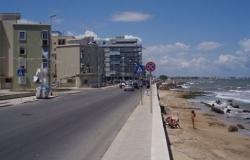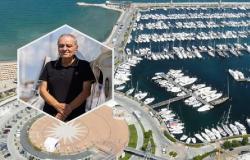Listen to the audio version of the article
Dead calm. The fact that the spending of European structural funds by Italian regions and ministries is proceeding with difficulty is a historical fact. But in the 2021-2027 programming it is assuming worrying dimensions, bordering on the grotesque. At the end of April, out of 74 billion euros available, actual spending was stuck at just 621 million, 0.9% of the total. This is from the latest quarterly transmission of data from the program management authorities to Brussels. No sign of acceleration compared to the data from the end of December indicated in the update note to the DEF, when spending was equal to 535 million (0.7%). Without a truly radical change, it will be impossible to use in time all these resources that come from the European Regional Development Fund and the European Social Fund +, plus national co-financing. If this were the case, automatic disengagement would be triggered and the money would go to other Member States.
Split into about fifty programs managed by regions and ministries, the funds must be committed by 2027 and spent by 2029, but at this rate a couple of decades would not be enough. If we really want to look for a sign of life, we can look at the increase in spending commitments, which went from 4.2 to 6.8 billion in four months, but we are still at less than 10% of the available sums. By 2025, spending will have to reach at least 7 billion to avoid triggering the automatic disengagement rule and having to give up European resources.
The recall of the EU Commission
The European Commission’s pressing call, contained in the recommendations to Italy approved on 19 June, to “accelerate the implementation of cohesion policy programmes”, an objective considered “crucial, together with the strengthening of administrative capacity at national level but especially in local authorities”, is therefore entirely justified. The Commission has therefore asked Italy to take advantage of the mid-term review to review each programme by next March, taking into account the “challenges” identified in the EU recommendations, in particular the disparities that persist between the Centre-North and the South. “In addition to strengthening administrative capacity – writes the Commission – the rapid implementation of investments in research, innovation and competitiveness is particularly important, especially in the less developed regions, in parallel with infrastructure development plans and regional smart specialization strategies”. Furthermore, Italy “should continue to improve the quality of essential public services in the Southern regions, in particular water and waste treatment services”. Among the other suggestions of the Commission, in the long paragraph dedicated to cohesion, also the training and retraining of workers, the reduction of young people neither in employment nor in education (NEET) and the support to women seeking employment.
Old and new causes of the stalemate
The spending of European funds reflects the general difficulties of the country system in making public investments. This is evidenced by the administrative strengthening plans requested by Brussels from the Italian regions more than ten years ago (Fitto was Minister for Regional Affairs in the Berlusconi government), in an attempt to improve the capacity of public administrations, from the planning to the implementation and reporting phases. Furthermore, the high level of litigation, accompanied by the long times of civil justice, has not helped: too often, when a tender is awarded, the company that came in second appeals. To these “historical” causes and to the initial delay in the 2021-2027 programming due to Covid, new ones have been added. The PNRR has produced a strong “displacement effect”: these are huge resources (two-thirds of which are debt) that finance more or less the same things as the structural funds, but with a simpler and faster disbursement mechanism, based on the objectives achieved and not on the specific reporting of expenses. Furthermore, the PNRR funds must be spent by 2026, while for the others there are two more years. Hence the very high political and media attention on the PNRR and the oblivion for everything else, including the Complementary Plan.
Minister Fitto’s reforms
But there are also other reasons that are contributing to the stalemate. Wanting to put public investment policies in order, the Minister for European Affairs, the South, Cohesion Policies and the PNRR, Raffaele Fitto, intervened in a profound way on the governance of cohesion, in a logic of complementarity but also of centralization. In February 2023, with the decree amending the PNRR, he outlined a reform of cohesion by establishing the closure of the Agency for Cohesion, which then occurred in December. Resources and skills were transferred to the Department of the Presidency of the Council for Cohesion (DPCOE) divided into five general offices, one of which is still without a manager and another entrusted only a couple of months ago. Fitto’s reform (approved by decree in early May this year and still under discussion in Parliament for conversion) imposed Cohesion Agreements on the regions (those of Campania, Puglia and Sardinia are still missing) to bind them to a shared list of projects and unlock the resources of the national Development and Cohesion fund. The first (Liguria) was signed in September 2023; only at the end of April 2024 did Cipess approve the 17 already signed but registration by the Court of Auditors is still missing. Moral: the regions have not yet seen a single euro, resources in many cases necessary for the co-financing of European structural funds. There has been no shortage of tension between the minister and the governors, which in the case of Campania reached the Council of State. Furthermore, until a few weeks ago the management authorities of some national programs were still missing.
Time is running out but the positive effects expected from Fitto’s reforms are still not visible.






